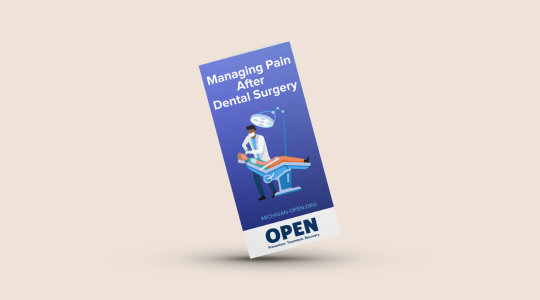Learn ways to manage pain after dental surgery such as: over-the-counter medications, non-medication strategies, and opioids, if prescribed.

Cite this work:
OPEN: Overdose Prevention Engagement Network (2024). Managing Pain After Dental Surgery [English]. Retrieved from https://doi.org/10.56137/OPEN.000030
OPEN: Overdose Prevention Engagement Network (2024). Managing Pain After Dental Surgery [Spanish]. Retrieved from https://doi.org/10.56137/OPEN.000031
OPEN: Overdose Prevention Engagement Network (2024). Managing Pain After Dental Surgery [Arabic]. Retrieved from https://doi.org/10.56137/OPEN.000032